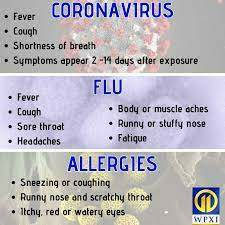Amid Covid-19, as countries in the Northern Hemisphere buckle up for their winter months – a heavy flu season, health experts have mixed views on how well they will cope.
Experts are anticipating that the combination could overwhelm health systems and complicate the ability to make accurate diagnoses. That’s because several countries in the Northern Hemisphere struggled to contain the outbreak during summer. But contrary to that, much of the Southern Hemisphere witnessed almost no flu season in April, around the time autumn is set to become winter.
For example, South Africa government laboratories that would normally record more than 1,000 cases of flu between April and August, recorded only a single case. Meanwhile Australia reported 193 notifications of laboratory-confirmed influenza for July, compared with 70,071 in the same month last year.
Reasons for the diminished influenza spread in the Southern Hemisphere include social distancing and other measures implemented to combat Covid-19. But as there is no detailed blueprint for dealing with a combined flu season and pandemic, health experts are skeptical on how the Northern Hemisphere will perform.
Hence according to experts, countries in the Northern Hemisphere, including the US where flu season normally begins around October, must rely on flu shots and adhere to Covid-19 preventive measures to keep influenza in check.
Moreover, the WHO has estimated that the crude mortality ratio for Covid-19 is between 3 per cent and 4 per cent, while mortality is usually well below 0.1 per cent for seasonal flu. In spite of this, ‘influenza-pneumonia’ remains the leading causes of death in the US. During the 2018-2019 flu season, nearly 500,000 hospitalizations were reported and an estimated 34,157 people died, reported Weforum.org.
Influenza (Flu) and COVID-19 are both contagious respiratory illnesses, but they are caused by different viruses. COVID-19 is caused by infection with a new coronavirus (called SARS-CoV-2) and flu is caused by infection with influenza viruses. Because some of the symptoms of flu and COVID-19 are similar, it may be hard to tell the difference between them based on symptoms alone, and testing may be needed to help confirm a diagnosis. Flu and COVID-19 share many characteristics, but there are some key differences between the two.
While more is learned every day, there is still a lot that is unknown about COVID-19 and the virus that causes it. This page compares COVID-19 and flu, given the best available information to date.
Both COVID-19 and flu can spread from person-to-person, between people who are in close contact with one another (within about 6 feet). Both are spread mainly by droplets made when people with the illness (COVID-19 or flu) cough, sneeze, or talk. These droplets can land in the mouths or noses of people who are nearby or possibly be inhaled into the lungs.
It may be possible that a person can get infected by physical human contact (e.g. shaking hands) or by touching a surface or object that has virus on it and then touching his or her own mouth, nose, or possibly their eyes. Both flu virus and the virus that causes COVID-19 may be spread to others by people before they begin showing symptoms, with very mild symptoms or who never developed symptoms (asymptomatic).
Differences:
While COVID-19 and flu viruses are thought to spread in similar ways, COVID-19 is more contagious among certain populations and age groups than flu. Also, COVID-19 has been observed to have more superspreading events than flu. This means the virus that causes COVID-19 can quickly and easily spread to a lot of people and result in continuous spreading among people as time progresses.
The National Institutes of Health (NIH) has developed guidance on treatment of COVID-19external icon, which will be regularly updated as new evidence on treatment options emerges.—Agencies









